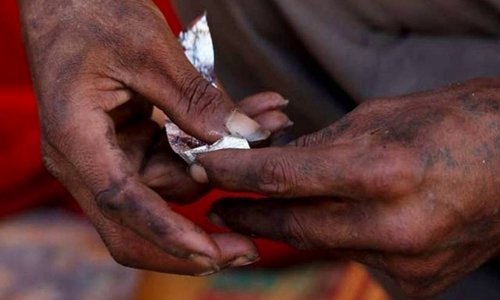Myanmar fishermen picked 23 sacks containing 691 kg of ice drugs worth USD 20.2 million on the Andaman Sea on October 16.
These sacks are all referred to as Chinese green tea - the packaging is often used by Southeast Asian criminal gangs to smuggle ice drugs to countries like Japan, South Korea and Australia.

A homeless person holds a note describing drug use in Loikan, Shan State, Myanmar in January Photo: Reuters
Fishermen in the Ayeyarwady area thought the sacks contained alum so they burned, some fainted. After they informed the authorities, the police on October 17 went to the beach and found two more sacks of the same type. The remaining sacks were sent to the Pyapon district police station today.
"In my whole life with my parents, we have never seen drugs floating in the sea," said Zaw Win, a local official of the National League Democratic Party, who assists fishermen to work with the police, talk.
The billion-dollar drug industry in Myanmar is concentrated in Shan state, the eastern part of the country, where the hills covered with poppies are the ideal cover for rock drug processing laboratories. The ice made in Myanmar is being moved out of the country to more lucrative markets via routes through Laos, Thailand and Cambodia.
A United Nations Office on Drugs and Crime study found that Southeast Asian crime groups make more than $ 60 billion a year through sophisticated smuggling and money laundering activities.



 MarietjieMichelleSmit
MarietjieMichelleSmit







